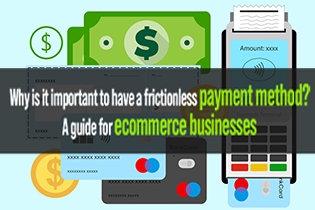
Since the dawn of the digital era, consumer behaviour has undergone significant transformation. As new technology is introduced, consumers' expectations of brands continue to evolve in tandem with technological advancement. However, as a result of the epidemic, there has been a substantial and unanticipated change in consumer behaviour and expectations. Customers have been forced to adopt entirely new habits as a result of the devastation to their lives and livelihoods experienced throughout the globe. This transformation was brought about by a trial by fire, which accelerated a decade's worth of digital adoption in a matter of months, affecting customer behaviour not just in digital spaces but also in brick-and-mortar stores.
Determine which services can assist you in sustaining long-term dynamics 365 solutions, company resilience and success by identifying your needs.

Learn more about the three stages that must be followed in order to create a successful digital customer service strategy:
- Gain an understanding of existing customer journeys: Use this checklist of questions to gain an understanding of typical customer journeys, which will assist you in determining what consumers are seeking.
- Implement required technology: Examine three key technologies that company leaders should consider in order to achieve their customer experience objectives.
- Determine the level of success: Keep track of the appropriate metrics to evaluate the success of a digital customer service plan in place.
Digital Trends That Are Only Getting Started
So, what does this imply for businesses who want to stay on top of current consumer trends? Technology is seen positively by today's customers, who regard it as an intimate lifeline. They like trying new products and shopping on a trial basis, and they are on the lookout for novelty. This shows their need for a feeling of control and empowerment over their own lives. The fact that consumers are no longer able to differentiate between material life and immersive digital experiences is one of the most fascinating developments to emerge from the pandemic. This is obviously a result of the majority of the world's population working from home, which has had a knock-on impact. Consumers are pushing companies to adapt in the digital-first marketplace in real time as they abandon long-held purchasing patterns.
In the same way as other organisations, you may as of now use Microsoft Dynamics in a key region, like CRM. The development of the item, however, is bringing Dynamics AX, NAV, GP, SL and CRM together into one Dynamics 365 solutions contribution. It bodes well. The requirements and exercises of partner the executives, advertising, client care and deals have significant cross-over, and synchronizing these regions further develops client experience and insight results.

The Contemporary Digital Consumer Exhibits The Following Characteristics:
- A willingness to try new things
- Self-efficiency
- Know-how in the field of information
- Integration of digital and physical elements
- Device use is very high.
The Ramifications Of The Pandemic
However, the "wow factor" of new technology is no longer sufficient to captivate customers in the same way it once did. When it comes to consumer behaviour, people have never been more discriminating or suspicious, and this has never been more apparent than with the shift in consumer behaviour brought on by the epidemic. Customers now demand businesses to understand them and their requirements, and the epidemic has resulted in a significant change in the perception of what those needs really are. The most recent positive experience a customer has becomes their expectation. Consumer behaviour is changing rapidly, and brands that want to remain ahead of the competition must adapt their own customer service strategies to reflect this change.
Dynamics 365 solutions brings all deals and client information together into one framework, offering clients a solitary wellspring of truth. This gives clients a total image of their clients' excursion, assisting them with following client journeys, create and evaluate leads, and take advantage of chances.
Brands must adapt and broaden their strategies as they anticipate customers to do the following:
This is the new normal. Be more ambivalent, inconsistent, demanding, and untrustworthy in your interactions. Make digital encounters more frequent and more demanding by speeding up their digital activities.
The Model That Is Focused On The Consumer
The combination of contemporary digital habits with the anxiety-driven behaviours induced by the epidemic poses a major problem for businesses seeking to maintain growth while fulfilling consumer demands. That is why companies must first get fascinated with their customers and strive toward the development of a new operating model. A customer-obsessed organisation works in a distinct way, with its strategy, operations, and budget all geared toward the consumer. Customer-driven, insights-driven, quick, ultra-nimble, and linked to relevant data are all requirements for every successful business.
The First Step Is To Put Up A Comprehensive Ecosystem, Which Includes:
- Identity resolution on a customised and individual basis is what recognition is all about.
- Contextual insight: Historical knowledge combined with real-time contextual understanding
- Experience: Using analytics to decide whether to take an action, provide an offer, publish information, or send a message
- Orchestration is the process of delivering information and managing conversations at the right touch points.
- Continuous engagement and strategic planning are aided by insights from optimization.
Taking A Look Toward The Horizon
As new digital trends develop and customer behaviour and expectations shift, it is essential for companies to adapt in order to remain relevant in the marketplace. Companies must choreograph a holistic end-to-end journey for each consumer that provides value at every contact and drives intent via flawlessly linked experiences in both the real and digital worlds if they want to maintain their competitive advantage. Many businesses and sectors are taking use of deep AI-powered segmentation and insights from Microsoft Dynamics 365 Customer Insights, as well as journey-orchestration capabilities in Microsoft Dynamics 365 Marketing, to achieve this.
Like all applications in the Dynamics 365 family, Field Service is profoundly versatile, with mobile and tablet applications accessible across Android, iOS, and Windows gadgets.








